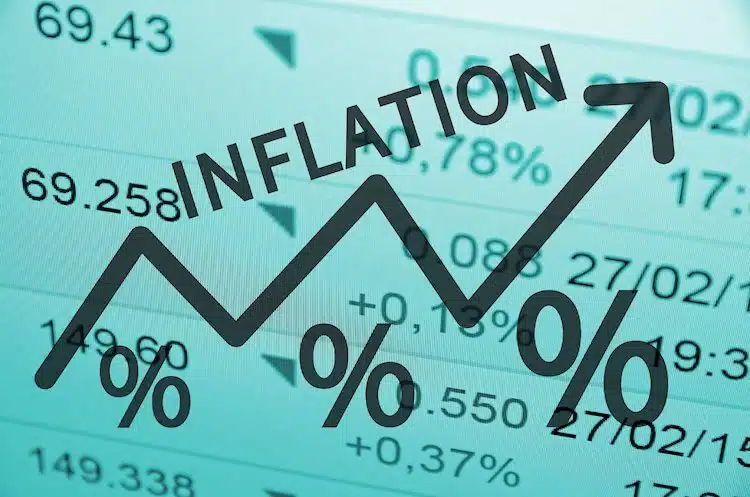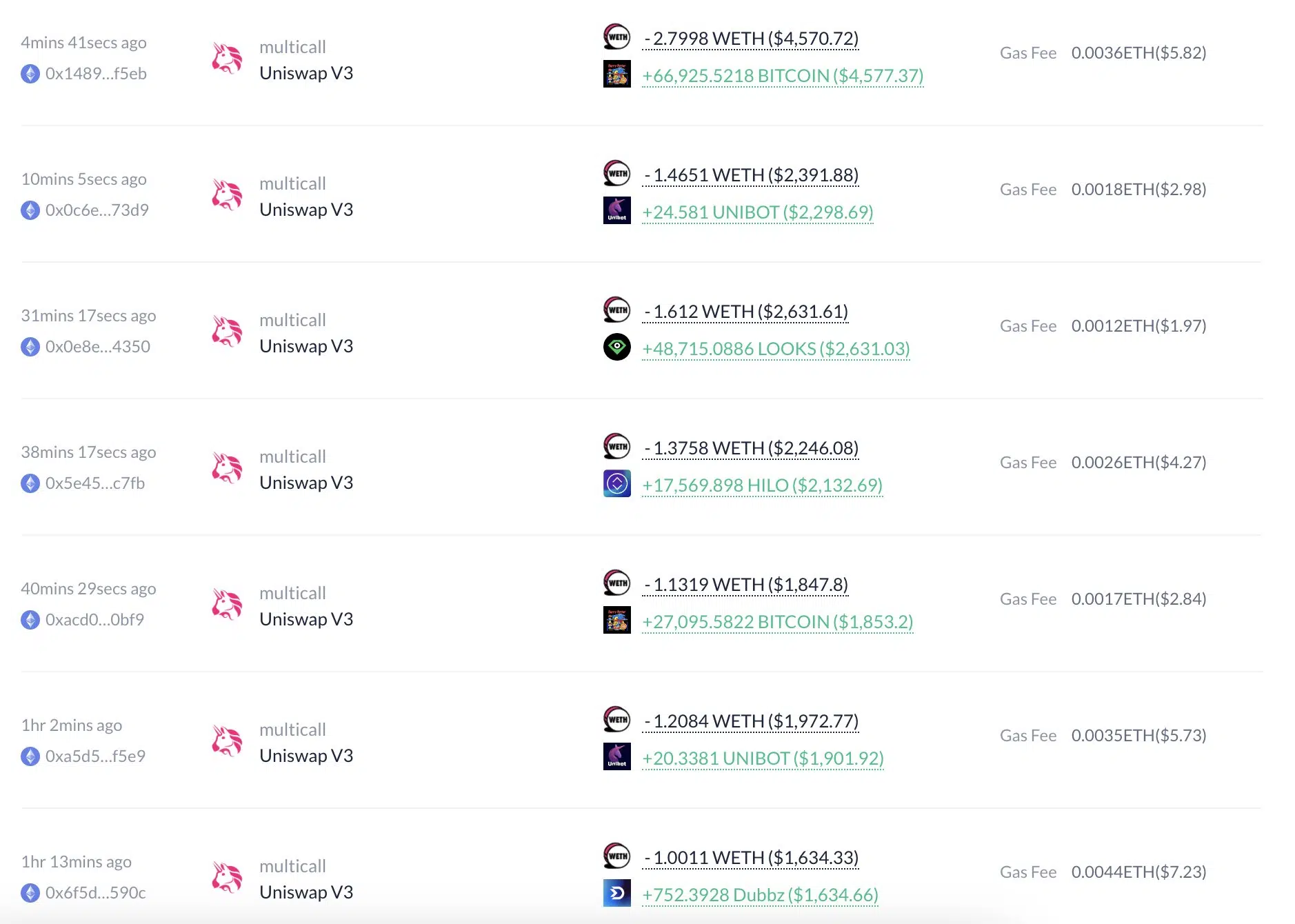The Core Personal Consumption Expenditures Price Index (Core PCE) is a key indicator of inflation in the United States and will be released on Friday, February 24 at 13:30 GMT. In the lead up to the release, economists and researchers from eight major banks have provided their forecasts for the Core PCE.
The US PCE Price Index is expected to ease to 4.9% year-on-year in January from the previous 5%, while the more relevant Core PCE Price Index is expected to fall a tick to 4.3% year-on-year. On a monthly basis, Core PCE inflation is forecast to rise by 0.4%, above 0.3% reported in December.
ING analysts predict that the Core PCE deflator is set to rise by 0.4% month-on-month, more than double the 0.17% month-on-month required to produce year-on-year inflation of 2%. Deutsche Bank researchers expect the Core PCE deflator to increase by 0.5% month-on-month, leading to a sticky year-on-year rate of 4.4% which could edge up to 4.5% with the three-month and six-month annualised growth rates going back up.
Societe Generale analysts forecast gains for the PCE of 0.5% month-on-month for headline and 0.4% for core. Some analysts estimate a 0.55% increase for core, which would take the annual rate up to 4.5% from 4.4% in December.
Trade Desk analysts expect Core PCE prices to accelerate in January to its strongest month-on-month pace in five months, with a projected 0.5% increase month-on-month. The year-on-year rate is likely to stay unchanged at 4.5%, suggesting price gains remain elevated. With stronger gasoline prices in January, headline PCE inflation is expected to end up at 0.5% month-on-month.
National Bank Financial analysts predict that the annual core PCE deflator may have moved down from 4.4% to a 15-month low of 4.3% in January. CIBC analysts project that the January core PCE inflation rate will subside to 4.3% from 4.4% in December, given the lower weight of shelter in the index and strong core services inflation.
Citibank analysts forecast a strong 0.54% month-on-month increase in core PCE inflation in January with upside risks of a print that rounds to 0.6%. This would imply core PCE rising to 4.5% year-on-year from 4.4% in December.
Credit Suisse analysts anticipate an above-consensus acceleration in both headline and core PCE, from 0.1% month-on-month and 0.3% month-on-month in December to 0.6% month-on-month and 0.5% month-on-month respectively. If realized, these readings would be seen as reinforcing hawkish Federal Reserve policy risks, and on the margin might bring further weight to the scenario of a 50 basis points hike in March.
The Core Personal Consumption Expenditures Price Index (Core PCE) is an important indicator of inflation in the United States. It is published by the US Bureau of Economic Analysis and estimates the average amount of money the United States consumers spend over a month. The “core” reading excludes seasonal, volatile products such as food and energy for a more accurate calculation.
The Core PCE is a key indicator of inflation, therefore a higher-than-expected reading is bullish for the US Dollar and, vice-versa, a lower-than-expected reading is bearish for the USD. As the release of the Core PCE approaches, economists and researchers from major banks have provided their forecasts for the Core PCE.
ING analysts predict that the Core PCE deflator is set to rise by 0.4% month-on-month, more than double the 0.17% month-on-month required to produce year-on-year inflation of 2%. Deutsche Bank researchers expect the Core PCE deflator to increase by 0.5% month-on-month, leading to a sticky year-on-year rate of 4.4% which could edge up to 4.5% with the three-month and six-month annualised growth rates going back up.
Societe Generale analysts forecast gains for the PCE of 0.5% month-on-month for headline and 0.4% for core. Some analysts estimate a 0.55% increase for core, which would take the annual rate up to 4.5% from 4.4% in December.
Trade Desk analysts expect Core PCE prices to accelerate in January to its strongest month-on-month pace in five months, with a projected 0.5% increase month-on-month. The year-on-year rate is likely to stay unchanged at 4.5%, suggesting price gains remain elevated. With stronger gasoline prices in January, headline PCE inflation is expected to end up at 0.5% month-on-month.
National Bank Financial analysts predict that the annual core PCE deflator may have moved down from 4.4% to a 15-month low of 4.3% in January. CIBC analysts project that the January core PCE inflation rate will subside to 4.3% from 4.4% in December, given the lower weight of shelter in the index and strong core services inflation.
Citibank analysts forecast a strong 0.54% month-on-month increase in core PCE inflation in January with upside risks of a print that rounds to 0.6%. This would imply core PCE rising to 4.5% year-on-year from 4.4% in December.
Credit Suisse analysts anticipate an above-consensus acceleration in both headline and core PCE, from 0.1% month-on-month and 0.3% month-on-month in December to 0.6% month-on-month and 0.5% month-on-month respectively. If realized, these readings would be seen as reinforcing hawkish Federal Reserve policy risks, and on the margin might bring further weight to the scenario of a 50 basis points hike in March.
However, if the readings are weaker than expected, it could represent a more substantial surprise relative to now more hawkish consensus. In this case, there may be speculation about possible ‘technical’ reasons behind it, which might undermine its credibility and ultimately its market impact.
The Core Personal Consumption Expenditures Price Index (Core PCE) is a key indicator of inflation in the United States. It is published by the US Bureau of Economic Analysis and estimates the average amount of money the United States consumers spend over a month. The “core” reading excludes seasonal, volatile products such as food and energy for a more accurate calculation.
The Core PCE is a key indicator of inflation, therefore a higher-than-expected reading is bullish for the US Dollar and, vice-versa, a lower-than-expected reading is bearish for the USD. As the release of the Core PCE draws closer, economists and researchers from major banks have provided their forecasts for the Core PCE.
ING analysts predict that the Core PCE deflator is set to rise by 0.4% month-on-month, more than double the 0.17% month-on-month required to produce year-on-year inflation of 2%. Deutsche Bank researchers expect the Core PCE deflator to increase by 0.5% month-on-month, leading to a sticky year-on-year rate of 4.4% which could edge up to 4.5% with the three-month and six-month annualised growth rates going back up.
Societe Generale analysts forecast gains for the PCE of 0.5% month-on-month for headline and 0.4% for core. Some analysts estimate a 0.55% increase for core, which would take the annual rate up to 4.5% from 4.4% in December.
Trade Desk analysts expect Core PCE prices to accelerate in January to its strongest month-on-month pace in five months, with a projected 0.5% increase month-on-month. The year-on-year rate is likely to stay unchanged at 4.5%, suggesting price gains remain elevated. With stronger gasoline prices in January, headline PCE inflation is expected to end up at 0.5% month-on-month.
National Bank Financial analysts predict that the annual core PCE deflator may have moved down from 4.4% to a 15-month low of 4.3% in January. CIBC analysts project that the January core PCE inflation rate will subside to 4.3% from 4.4% in December, given the lower weight of shelter in the index and strong core services inflation.
Citibank analysts forecast a strong 0.54% month-on-month increase in core PCE inflation in January with upside risks of a print that rounds to 0.6%. This would imply core PCE rising to 4.5% year-on-year from 4.4% in December.
Credit Suisse analysts anticipate an above-consensus acceleration in both headline and core PCE, from 0.1% month-on-month and 0.3% month-on-month in December to 0.6% month-on-month and 0.5% month-on-month respectively. If realized, these readings would be seen as reinforcing hawkish Federal Reserve policy risks, and on the margin might bring further weight to the scenario of a 50 basis points hike in March.
However, if the readings are weaker than expected, it could represent a more substantial surprise relative to now more hawkish consensus. In this case, there may be speculation about possible ‘technical’ reasons behind it, which might undermine its credibility and ultimately its market impact.
The Core PCE is an important indicator of inflation in the United States and its release on Friday, February 24 at 13:30 GMT will be closely watched by traders and investors. The Core PCE is a key indicator of inflation, therefore a higher-than-expected reading is bullish for the US Dollar and, vice-versa, a lower-than-expected reading is bearish for the USD.
Economists and researchers from major banks have provided their forecasts for the Core PCE in the lead up to its release. The forecasts range from a monthly increase of 0.4% to 0.5% for the Core PCE, with some analysts estimating a 0.55% increase for core, which would take the annual rate up to 4.5% from 4.4% in December.
The Core PCE is an important indicator of inflation in the United States and its release on Friday, February 24 at 13:30 GMT will be closely watched by traders and investors. The Core PCE is a key indicator of inflation, therefore a higher-than-expected reading is bullish for the US Dollar and, vice-versa, a lower-than-expected reading is bearish for the USD.
Analysts and researchers from major banks have provided their forecasts for the Core PCE in the lead up to its release. The forecasts range from a monthly increase of 0.4% to 0.5% for the Core PCE, with some analysts estimating a 0.55% increase for core, which would take the annual rate up to 4.5% from 4.4% in December.
The release of the Core PCE will be an important event in the markets as it will provide insight into the inflation


